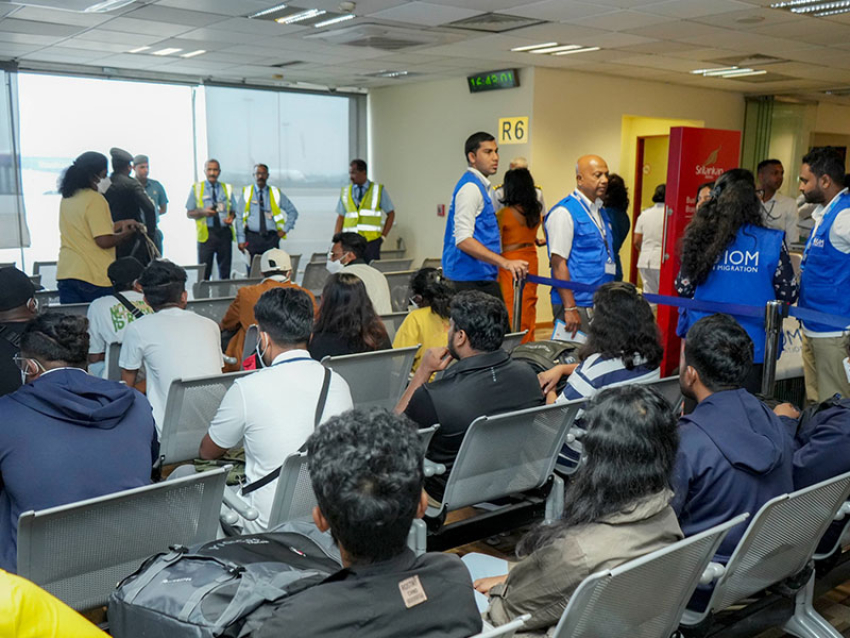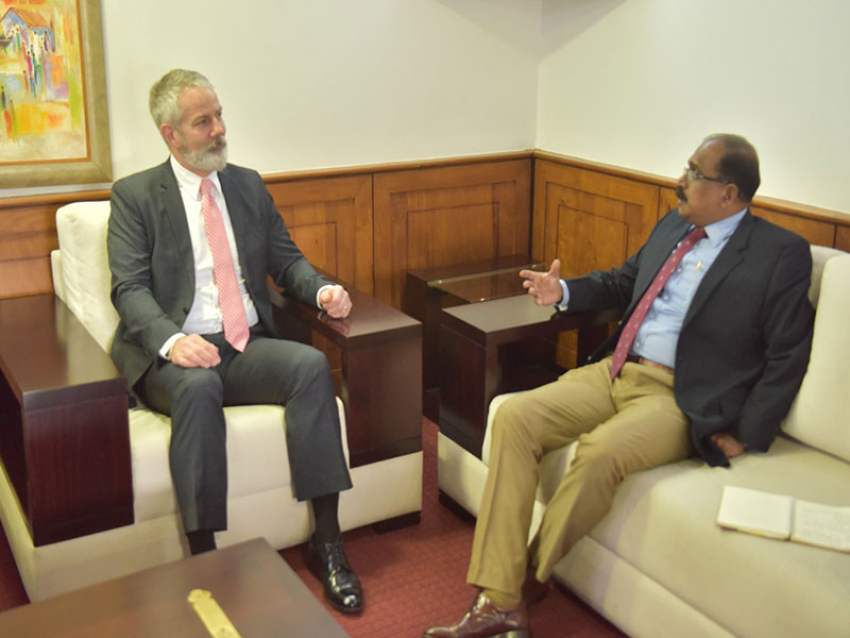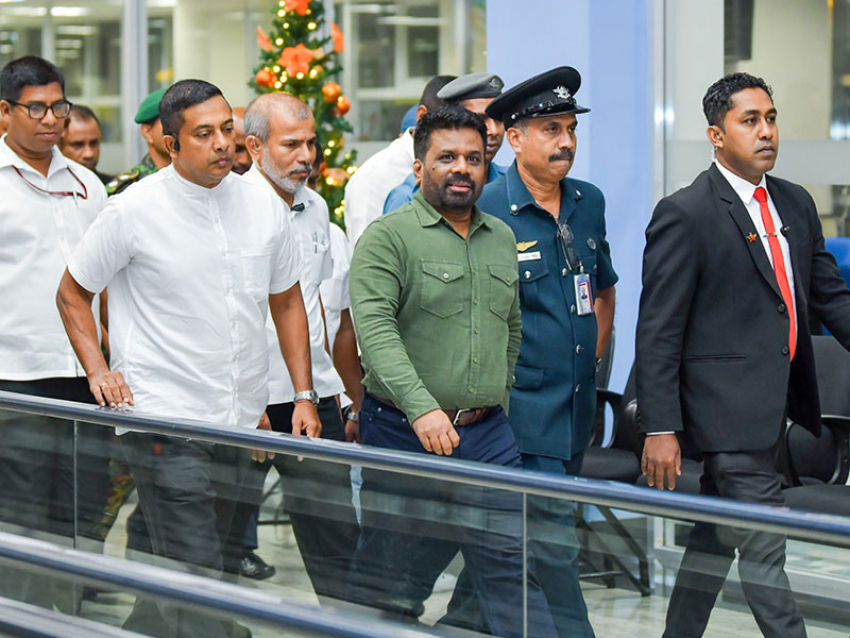The United States has killed the leader of Al-Qaeda in the Arabian Peninsula (AQAP), President Donald Trump said.Qasim al-Raymi, who has led the jihadist group since 2015, was killed in a US operation in Yemen, the White House said.The jihadist leader had been linked to a series of attacks on Western interests in the 2000s.He took over the leadership after his predecessor was killed by a US drone strike.AQAP was formed in 2009 from two regional offshoots of Al-Qaeda in Yemen and Saudi Arabia, with the goal of toppling US-backed governments and eliminating all Western influence in the region.
Rumours of Raymi's death began circulating in late January. In response, AQAP released an audio message with Raymi's voice on 2 February in which he said AQAP was behind a deadly shooting at a US naval base in Pensacola, Florida.
The shooting took place in December, and the message may have been recorded earlier.The statement from the White House confirmed Raymi's death but it did not say when he was killed.
"His death further degrades AQAP and the global al-Qaeda movement, and it brings us closer to eliminating the threats these groups pose to our national security," the statement read.
Yemeni fighters loyal to the government close in on a suspected location of AQAP in 2018
"The United States, our interests, and our allies are safer as a result of his death."Raymi was a trainer at an al-Qaeda camp in Afghanistan in the 1990s . He travelled to Yemen in 2004, where he was imprisoned for five years in connection with a plot to attack five foreign embassies in the capital.He is believed to have overseen the formation of al-Qaeda in Yemen.US officials once described AQAP as "the most active operational franchise" of al-Qaeda beyond Pakistan and Afghanistan.Most of its attacks have been in Yemen, where it has taken advantage of political instability that has plagued the country for years.It is thought to have been behind a large number of attacks in Yemen and Saudi Arabia, in which hundreds of people have have been killed, as well as a series of sophisticated airline bomb plots targeting the US that were narro
Al-Qaeda in the Arabian Peninsula
16 June 2015
Share this with Facebook Share this with Messenger Share this with Twitter Share this with Email Share
Image copyrightYOUTUBE
Image caption
Al-Qaeda in the Arabian Peninsula is the jihadist network's most active affiliate
Al-Qaeda in the Arabian Peninsula (AQAP) was formed in January 2009 by a merger between two regional offshoots of the international jihadist network in Yemen and Saudi Arabia.
Since then, it has become what US officials have described as "the most active operational franchise" of al-Qaeda beyond Pakistan and Afghanistan.
The group has vowed to target oil facilities, foreigners and security forces as it seeks to topple the Saudi and Yemeni governments, and establish an Islamic caliphate.
It has claimed responsibility for a large number of attacks in the two countries, in which hundreds of people have been killed, as well as a series of sophisticated airline bomb plots targeting the US that were narrowly foiled.
Image copyrightYOUTUBE
Image caption
AQAP has strongholds in southern and eastern Yemen, where it can operate openly
AQAP has also capitalised on the instability in Yemen in recent years to establish strongholds in the country's south and east, sometimes taking control of entire towns and villages.
But the group has also suffered setbacks, mostly as a result of a US drone campaign that has seen more than 100 air strikes targeting its operatives in the past six years.
In June 2015, AQAP announced that its leader Nasser al-Wuhayshi - who was believed to also have been al-Qaeda's overall second-in-command - had been killed in an air raid.
While the group was quick to replace Wuhayshi with the experienced military and operations chief, Qasim al-Raymi, analysts said his death was a significant blow.
Beheading
Following the 11 September 2001 attacks in the US, the late al-Qaeda leader Osama Bin Laden sought to launch a campaign in his homeland of Saudi Arabia with the intention of driving Americans out of the country and toppling the "apostate" monarchy.
Image copyrightAFP
Image caption
The Saudi branch of al-Qaeda targeted residential compounds in Riyadh
In May 2003, a local offshoot claimed responsibility for simultaneous suicide bombing attacks on three Western housing compounds in Riyadh, which left 29 people dead.
Despite a subsequent crackdown on Islamist militants and radicals by the Saudi security forces, al-Qaeda in Saudi Arabia was able to mount an attack on the Muhayyah residential compound in the capital that November, killing 17 people.
In 2004, it suffered a major blow when its leader, Khaled Ali Hajj - a Yemeni and former bodyguard of Bin Laden - was ambushed and killed by Saudi troops.
However, the group soon recovered under the guidance of a veteran Saudi militant, Abdul Aziz al-Muqrin, and launched a series of spectacular attacks.
On 1 May 2004, militants shot dead five Western workers at a petrochemical complex in the north-western Red Sea city of Yanbu. On 29 May, more than 20 foreign and Saudi nationals were killed in attacks on three sites in the city of al-Khobar, increasing fears of political instability and pushing up global oil prices.
The following month, members of AQAP abducted and beheaded a 49-year old American aerospace worker named Paul Johnson.
The triumph was short-lived, however, as when security forces stormed a hideout in Riyadh looking for Johnson's murderers Muqrin was shot dead.
Although militants killed at least nine people in a raid on the US consulate in Jeddah in December 2004, al-Qaeda in the Arabian Peninsula enjoyed notably less success under Muqrin's successor, Salih al-Awfi.
The Saudi security services gradually gained the upper hand, and succeed in preventing any major attacks the following year, when Awfi was himself killed during a police raid in the holy city of Medina.
In spite of the large numbers of Saudis who then travelled to militant training camps and gained experience fighting in places such as Iraq, the group found it increasingly difficult to organise operational cells inside the kingdom. Its last attempt a significant attack was at the Abqaiq oil facility in February 2006.
Prison break
Meanwhile in Yemen - the ancestral home of Bin Laden - militants took advantage of the weak central government, whose authority does not extend far outside the capital Sanaa, and established strongholds in its largely autonomous tribal regions.
Image copyrightAFP
Image caption
Al-Qaeda in Yemen was behind the deadly attack on the US embassy in Sanaa in 2008
Although al-Qaeda cells were held responsible for several attacks inside Yemen since the suicide boat attack on the USS Cole near the port of Aden in 2000 that killed 17 US sailors, it was not until the second half of the decade that a fully-functioning affiliated group was formed.
According to analyst Gregory Johnsen, between 2002 and 2003 the Yemeni government co-operated closely with the US to fight al-Qaeda. By the end of that period - which included one leader being killed in a controversial strike by a CIA drone aircraft - al-Qaeda appeared to be substantially weakened and so both countries shifted focus.
The policy appeared to have worked until February 2006, Mr Johnsen says, when 23 suspected al-Qaeda members managed to escape from a prison in Sanaa, including Jamal al-Badawi, the alleged mastermind of the USS Cole bombing.
Most were eventually either recaptured or killed, but two of the lesser-known escapees eluded the authorities, including Nasser Abdul Karim al-Wuhayshi, a former personal assistant to Bin Laden in Afghanistan, and Qasim al-Raymi.
Born in 1976 in the Mukayras region of what is now the southern province of al-Bayda, Wuhayshi spent time in religious institutions in Yemen before travelling to Afghanistan in 1998 and joining al-Qaeda. He fought at the battle of Tora Bora in December 2001, before escaping over the border into Iran, where he was eventually arrested. He was extradited to Yemen in 2003.
Raymi, born in Sanaa in 1978, was as a trainer at an al-Qaeda camp in Afghanistan in the 1990s before returning to Yemen. In 2004, he was imprisoned for five years in connection with a plot to attack five foreign embassies in the capital.
After escaping from prison, Wuhayshi and Raymi are said to have overseen the formation of al-Qaeda in Yemen, which took in both new recruits and experienced Arab fighters returning from Iraq and Afghanistan. Protected by tribes who were wary of government interference, the group established bases from which to launch fresh attacks.
The group claimed responsibility for two suicide bomb attacks that killed six Western tourists before being linked to the assault on the US embassy in Sanaa in September 2008, in which militants detonated bombs and fired rocket-propelled grenades. Ten Yemeni guards and four civilians were killed, along with six assailants.
Image copyrightAFP
Image caption
Wuhayshi is said to have overseen the rebuilding of al-Qaeda in Yemen
Four months later, Wuhayshi announced in a video the merger of the al-Qaeda offshoots in Yemen and Saudi Arabia to form "al-Qaeda of Jihad Organisation in the Arabian Peninsula".
Analysts said the move was designed to bring Saudi al-Qaeda members who had fled their country and Yemeni militants together under one umbrella as a first step towards launching attacks throughout the region.
Next to Wuhayshi and Raymi, the group's military commander, in the same video sat the new deputy leader, Said Ali al-Shihri, a Saudi national who was released from the US military detention centre at Guantanamo Bay in November 2007.
Another former detainee, Mohammed Atiq al-Harbi, also known as Mohammed al-Awfi, appeared alongside them and was described as a field commander.
Embarrassingly for both Riyadh and Washington, both men had been released from Guantanamo into the custody of the Saudi government's "deradicalisation" programme for militants, which included art therapy. They both left the facility within weeks.
The group's first operation outside Yemen was carried out in Saudi Arabia in August 2009 against the kingdom's security chief, Prince Mohammed bin Nayef, though he survived. The bomber, Ahmed al-Asiri, concealed a device containing the high-explosive pentaerythritol tetranitrate (PETN) inside his body.
Image copyrightAP
Image caption
AQAP said it was behind the alleged attack by Umar Farouk Abdulmutallab
His brother, Ibrahim, is believed to have made the bomb, as well as the device used in the failed attempt to destroy a Northwest Airlines Airbus A330 as it flew into Detroit on Christmas Day 2011.
A Nigerian man sentenced to life in prison in connection with the incident, Umar Farouk Abdulmutallab, allegedly told investigators that AQAP operatives trained him in Yemen, equipped him with a powerful explosive device and told him what to do.
After news of the latter incident emerged, AQAP released a statement saying it had sought to avenge raids by Yemeni forces aided by US intelligence, in which dozens of militants are reported to have died.
Government offensive
Following the bombing attempt, Yemeni government forces launched a major offensive against AQAP, targeting the organisation's senior leaders and training camps in the governorates of Shabwa, Abyan and Marib.
Image copyrightAFP
Image caption
Yemeni government forces launched a major offensive against AQAP in January 2010
They were supported heavily by the US, which sent advisers, provided intelligence, deployed unmanned drones and fired cruise missiles.
Though officials claimed six leaders were killed, the offensive was considered largely unsuccessful. Instead of decapitating AQAP and disrupting its operations, the group shifted its strategy and stepped up its attacks inside Yemen.
In February 2010, Raymi issued a statement threatening the US.
"Today, you have attacked us in the middle of our household, so wait for what will befall you in the middle of yours," he said. "We will blow up the earth from beneath your feet".
Eight months later, the group was accused of sending bombs hidden in two packages addressed to synagogues in the US city of Chicago, which were found on planes in Dubai and the UK.
Image copyrightAFP
Image caption
Qasim al-Raymi warned Americans in 2010: "We will blow up the earth from beneath your feet."
Both were shipped from Yemen and used PETN, the explosive that was also used in the two earlier attacks on Prince Mohammed and the Northwest Airlines jet. One of the detonators was also almost exactly the same as the one used by Mr Abdulmutallab. US officials said Ibrahim al-Asiri had made them.
Exploiting instability
At home, AQAP capitalised on political turmoil in Yemen resulting from the uprising against longtime President Ali Abdullah Saleh in 2011 to capture a string of southern towns and villages, only to be driven out of many areas in an army offensive in 2012 ordered by Mr Saleh's successor, Abdrabbuh Mansour Hadi.
At the same time, US President Barack Obama authorised a three-fold increase in the number of drone strikes targeting AQAP operatives in Yemen in 2012, resulting in the deaths of a number of senior figures, including Shihri, the deputy leader.
Image copyrightAFP
Image caption
A suicide bomb attack on a military parade rehearsal in 2012 left more than 120 people dead
The territorial losses did not, however, stop AQAP from launching major attacks Yemeni security forces and government personnel.
They included a suicide bombing at a military parade in Sanaa in May 2012 that killed more than 120 people, and a raid on a hospital in the defence ministry compound in the capital in December 2013 that left 56 people dead.
At the same time, Wuhayshi was reportedly named al-Qaeda's "general manager" by Bin Laden's successor as overall leader, Ayman al-Zawahiri. Intercepted communications between the two men led to an alert that saw several US embassies closed in the Middle East and Africa in August 2013.
In March 2014, Wuhayshi was filmed telling a outdoor gathering of dozens of militants that al-Qaeda would fight Western "Crusaders" and their allies everywhere, pledging to "remove the cross, the bearer of the cross, America".
That December, the group threatened to kill an American journalist it was holding hostage, Luke Somers, if its unspecified demands were not met within three days. As the deadline approached, Somers was killed along with another hostage, South African teacher Pierre Korkie, during a failed rescue attempt by US special forces.
In January 2015, AQAP claimed to be behind a deadly attack on the Paris offices of the French satirical magazine, Charlie Hebdo, which had published caricatures of the Prophet Muhammad. Officials confirmed that one of the gunmen had received training at an AQAP camp.
Image copyrightEPA
Image caption
US drone strikes have resulted in the deaths of many AQAP militants, but also Yemeni civilians
AQAP also refused to pledge allegiance to the leader of the rival jihadist group, Islamic State, after it proclaimed the creation of caliphate in the territory under its control in Syria and Iraq, bucking the trend among other al-Qaeda affiliates.
In Yemen, AQAP capitalised on the chaos caused by a rebellion by the Houthi movement and a Saudi-led air campaign to weaken the Zaidi Shia group, expanding the territory it controlled in the south and east of the country.
However, the US drone strikes targeting AQAP did not stop and one was reported to have killed Wuhayshi as he met two fellow militants in Mukalla on 9 June.
On 16 June, AQAP official Khaled Batarfi confirmed Wuhayshi's death in a video statement and vowed that "the blood of these pioneers makes us more determined to sacrifice". Batarfi also said Raymi had been elected by the group's leadership council to succeed Wuhayshi.
Does strategy of killing militant leaders work?
By Shiraz Maher
King's College, London
16 June 2015
Share this with Facebook Share this with Messenger Share this with Twitter Share this with Email Share
Image copyrightAFP
Image caption
Osama Bin Laden (left), Nasser al-Wuhayshi (centre) and Mokhtar Belmokhtar (right)
The West's "whack-a-mole" approach to counter-terrorism has gathered momentum with the killing of Nasser al-Wuhayshi, leader of al-Qaeda in the Arabian Peninsula (AQAP).
There are also rumours that Mokhtar Belmokhtar, the leader of al-Qaeda in the Islamic Maghreb (AQIM), has also been killed in a separate drone strike in Libya although the group has denied this.
Meanwhile, the United States deployed a special forces team deep inside Syrian territory last month which killed Abu Sayyaf, a senior figure within Islamic State.
Killing jihadist leaders is an established policy, although its efficacy as a strategy is not always clear. The most famous example of this approach, of course, came with the raid to kill Osama bin Laden in Pakistan.
A few months later the wildly popular al-Qaeda ideologue, Anwar al-Awlaki, was killed in a drone strike in Yemen. The appeal of both men declined sharply afterwards prompting the view that killing terrorist leaders might be enough to force the global jihad movement into terminal decline.
Killing ideology
That belief has pervaded parts of US President Barack Obama's administration, which has pursued an aggressive drone strategy aimed at decimating much of al-Qaeda's leadership. The overwhelming majority of its most important figureheads have now been killed in this way, severely impacting the group's operations.
For a moment it seemed as if the so-called "War on Terror" was won.
Al-Qaeda hit back. When the group announced Osama Bin Laden's death, it asked: "Are the Americans able to kill what Sheikh Osama lived and fought for, even with all their soldiers, intelligence, and agencies? Never! Never! Sheikh Osama did not build an organisation that would die with him, nor would end with him."
A similar message of defiance followed the death of Awlaki when the group declared: "America has killed Sheikh Anwar, but they can never kill his ideology."
Image copyrightAFP
Image caption
President Obama has pursued an aggressive drone strategy against militants
Indeed, the global jihadist current has not ended with the death of Osama bin Laden. Instead it has spread into something much more potent, particularly in Syria and Iraq where fighters of the Islamic State (IS) group run rampant.
They are, ironically, the inheritors of Abu Musab al-Zarqawi's legacy - the former leader of al-Qaeda in Iraq who was himself killed by the US in 2006.
When Islamic State detached itself from the central leadership of al-Qaeda to pursue an even more aggressive policy in Syria and Iraq, it claimed to be following the true spirit of Bin Laden's vision.
They defied his successor, Ayman al-Zawahiri, who had ordered IS to confine its operations to Iraq while leaving Jabhat al-Nusra to fight as the official representatives of al-Qaeda in Syria.
Filling the vacuum
The dispute between al-Qaeda and Islamic State has now given way to fratricidal conflict between the two groups and demonstrates both the limits and unintended consequences of killing terrorist leaders.
Herein lies the dilemma. There is obvious utility in killing terrorist leaders. Their deaths offer huge psychological blows to the groups they lead and impairs their operational capacity.
But there are clear drawbacks too. The vacuum left by the absence of terrorist leaders can also fracture the movements they leave behind, spawning even more violent and nihilistic offshoots.
Shiraz Maher is a Senior Fellow at the International Centre for the Study of Radicalisation (ICSR), King's College London. Follow him @ShirazMaher




















